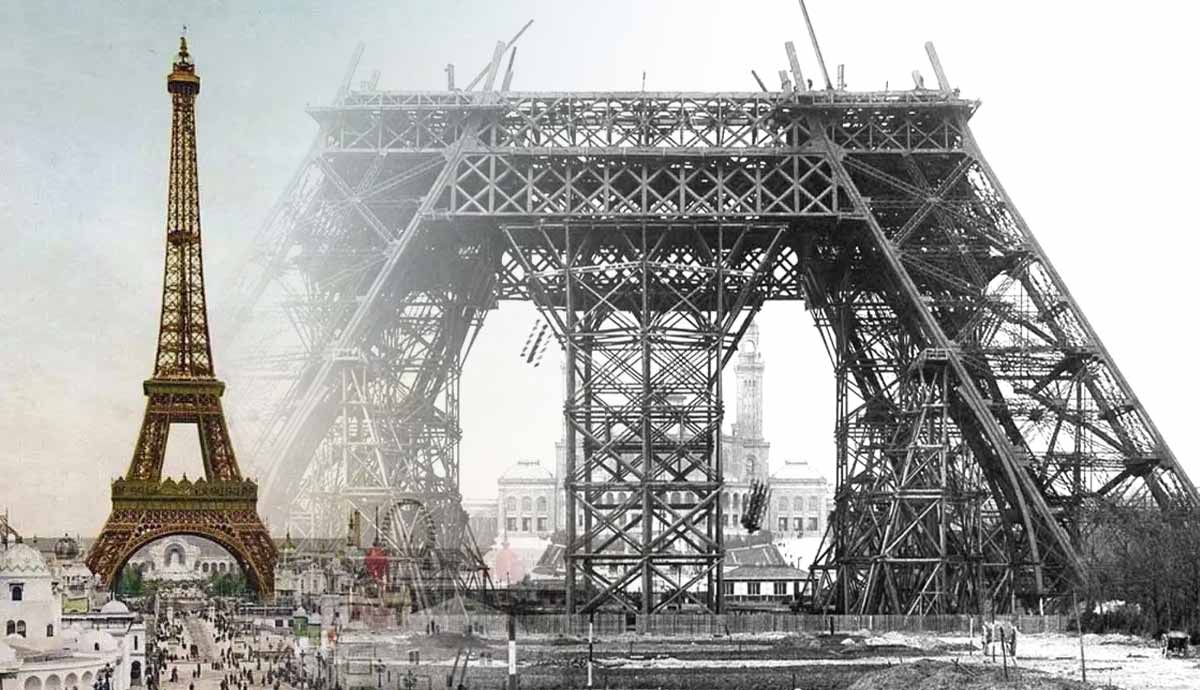
The Eiffel Tower is one of the most iconic and revered monuments of all time, a unique symbol of the city of Paris and a beacon of architectural innovation. Designed by Gustave Eiffel, and unveiled during the Paris World Fair in 1889, the tower was once the tallest monument in the world, and it showcased Paris as a world-leading center for cutting-edge technology and design. The 300-metre-high tower took 2 years, 2 months and 5 days to complete, and involved some 300 on-site workers to carry out the work. We track the timeline of the Eiffel Tower’s planning and construction to learn more.
Planning the Eiffel Tower Took Around 3 Years

Plans for a tower on the Champ-de-Mars that would be unveiled during the Paris Exposition Universelle of 1889 began in 1884. The World Fair coincided with the centennial of the French Revolution, and as such, planners hoped the tower at the center would become a symbol of French independence and freedom. The designs of French engineer Gustave Eiffel were selected from 107 different entries as part of an open competition.
Gustave Eiffel worked alongside two of his chief engineers, Emile Nouguier and Maurice Koechlin, and together they came up with the idea of a tower resembling a large pylon, featuring four lattice work girders, which came together into a pinnacle at the top. They also employed architect Stephen Sauvestre to assist with the aesthetic of their design. It took three years to push the design through the planning stages, ready for construction.
The Initial Construction Work Took Five Months

Official construction work on the Eiffel Tower began on the 26th of January 1887. In the build up to the tower’s construction, all the metal elements of the tower were created at Eiffel’s factory on the outskirts of Paris – they designed and made a kit comprising around 18,000 parts, which were then passed on to a team of workers to install in place. It took a huge team of 300 construction workers just five months to carry out their foundational work. First, they laid concrete foundations below ground level. Then they began to assemble the metal parts of the tower’s pillars on the 1st of July 1887.
Metal Pieces of the Eiffel Tower Were Assembled in 21 Months

The remainder of the tower’s upper levels took longer to complete, as their intricate parts had to be held together via a series of metal rivets. Four men were needed to fit each rivet in place – one to heat it, another to hold it firmly, another to accurately shape it and the final one to hammer it into place.

While piecing together the parts, workers had to stand on fairly flimsy wooden scaffolding by today’s standards, meaning it was dangerous, back-breaking work. The component parts were lifted high into the air by steam-powered cranes which climbed up gradually as the tower grew in height. This painstaking work began in July 1887; by December that year, the major girders up to the first level were complete. By the 1st of April 1888 the first floor was complete, and by the 14th of August 1888 construction workers had completed the second floor. The top levels were even trickier and more dangerous, requiring specialist work at a great height – they were finally completed on 31st March 1889.

Finally, the Eiffel Tower was unveiled to the public on the same day as the Paris Exposition Universelle, (the Paris World Fair), on the 15th of May 1889. Although it was only supposed to stay for 20 years, the tower has now become a permanent fixture on the Parisian skyline, and an architectural icon that attracts millions of tourists every year.









